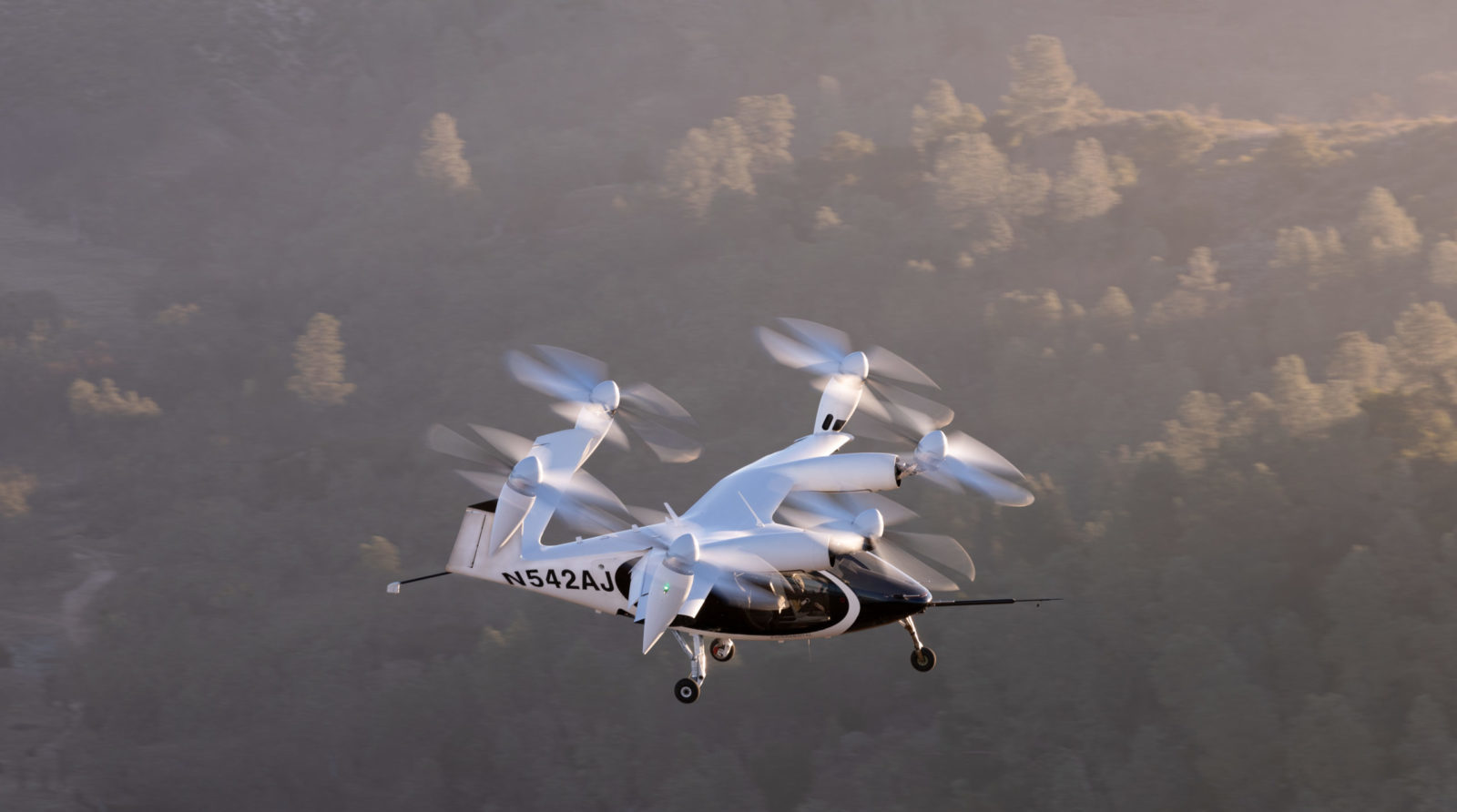Stay Up to Date
Submit your email address to receive the latest industry and Aerospace America news.
Air taxi pioneer lifts the self-imposed pause after February’s crash and explains circumstances of accident
This story has been updated
California-based Joby Aviation says it has resumed flying its all-electric prototype passenger aircraft after pausing the test flights in February to investigate the crash of an older prototype that was flying with no one aboard.
Joby, a leader in development of eVTOLs, or electrical vertical takeoff and landing aircraft, said in a quarterly conference call with investors and analysts that the company is still on track to begin flying customers in 2024.
The crash was part of Joby’s “envelope expansion” testing campaign, which intentionally pushes the limits of an aircraft significantly past any planned operating conditions, CEO JoeBen Bevirt said during the call.
“We do not expect this accident to have a meaningful impact on our business operations or certification timing,” Bevirt said.
During the flights, the company “steadily increased the demands on the aircraft to understand if, when and how failures occur, so that we can mitigate them,” Bevirt said. “Acknowledging that these flights pose a higher risk, we purposely conduct them in uninhabited areas and thanks to technology we developed in-house we’re able to perform them without anybody on board.”
Data from the test flights are helping Joby refine the design of its production model, and Bevirt gave investors and analysts an update about the first of those aircraft:
“I wanted to share that we’ve begun manufacturing our first production-intent aircraft,” he said. “This aircraft will be the first to roll off a pilot manufacturing line in Marina, California, and we expect to see it in the skies later this year.”
At the time of the crash, Joby was also conducting flights with the second pre-production prototype, a version first flown in January that has completed 38 flights reaching speeds of 305 kilometers per hour. The flights with this aircraft resumed this week, a Joby spokesperson told me via email.
The vehicle that crashed in February, a model JAS4-2 prototype, was flying at 438 kph, according to FlightAware.com. Joby lists the aircraft’s top speed at 200 miles per hour (320 kph).
Such crashes during prototype development are common and help companies like Joby understand the limits of new aircraft, Anubhav Datta, assistant professor of aerospace engineering at University of Maryland, told me by email.
“Crashes that occur at the limit of the flight envelope, without injury or loss of life or damage to property — which is how this case has been reported in public domain — can in fact be very very valuable,” Datta wrote. “You lose the aircraft, of course, but get the data on what can go wrong at the extremes of the flight envelope — what is the worst that might happen — so you can build in strategies to provide safety even under the worst of circumstances.”
Joby’s internal safety review board lifted the pause on flight testing, which it voluntarily introduced following the crash, the company said.
The company said it continues to work closely with the FAA and the National Transportation Safety Board to investigate the accident.
A preliminary report from the NTSB said Joby’s prototype was “substantially damaged” in the crash.
NTSB chair Jennifer Homendy mentioned the Joby crash in remarks before the General Aviation Manufacturers Association in Washington, D.C., on Feb. 24.
“You may have seen that NTSB is investigating a recent crash of a Joby Aviation air taxi prototype in California,” Homendy said, according to a transcript. “The experimental air taxi was being piloted remotely when it went down during a flight at the company’s test base on Wednesday. No injuries have been reported.”
She compared Joby’s crash during development of new technology to a crash of a self-driving car in 2018 during tests by Uber Advanced Technologies Group, the driverless car subsidiary that the company has since sold.
Homendy said NTSB believes in the importance of investigating crashes even for new technology during a test program to help developers understand risk management under federal guidelines.
“It’s important that we learn when these vehicles are in testing, well before they’re deployed,” she said.
About paul brinkmann
Paul covers advanced air mobility, space launches and more for our website and the quarterly magazine. Paul joined us in 2022 and is based near Kennedy Space Center in Florida. He previously covered aerospace for United Press International and the Orlando Sentinel.
Related Posts
Stay Up to Date
Submit your email address to receive the latest industry and Aerospace America news.




